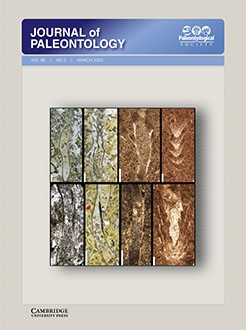The fossil record of Early Triassic diapsids is very important to understand how the end-Permian mass extinction affected ecosystems and the patterns and processes involved in the subsequent biotic recovery. Vertebrate fossil assemblages of continental deposits in current-day South Africa, China, and Russia are the best source of information of this clade during the aftermath of the extinction event. Although considerably less sampled, the Induan continental rocks of the Panchet Formation of the Damodar Basin (eastern India) have also yielded a relatively diverse vertebrate assemblage composed of fishes, temnospondyls, synapsids, and a single proterosuchid taxon. Here, we report on a small isolated diapsid partial ilium (ISIR 1132) from the upper Panchet Formation. This specimen has a distinct morphology compared to other tetrapods that we know, including a shallow emargination on the dorsal margin of the anterior portion of the iliac blade, and ratio between height of iliac blade versus maximum height of iliac acetabulum at level of the dorsalmost extension of supraacetabular crest ≤0.45. Comparisons and a quantitative phylogenetic analysis found ISIR 1132 as a non-archosauromorph neodiapsid. This new specimen expands the reptile diversity in the Panchet Formation as well as for the rest of Gondwana, where Early Triassic non-archosauromorph neodiapsid species are extremely scarce.
How to translate text using browser tools
11 April 2022
A new faunistic component of the Lower Triassic Panchet Formation of India increases the continental non-archosauromorph neodiapsid record in the aftermath of the end-Permian mass extinction
Martín D. Ezcurra,
Saswati Bandyopadhyay,
Kasturi Sen
ACCESS THE FULL ARTICLE

Journal of Paleontology
Vol. 96 • No. 2
March 2022
Vol. 96 • No. 2
March 2022




